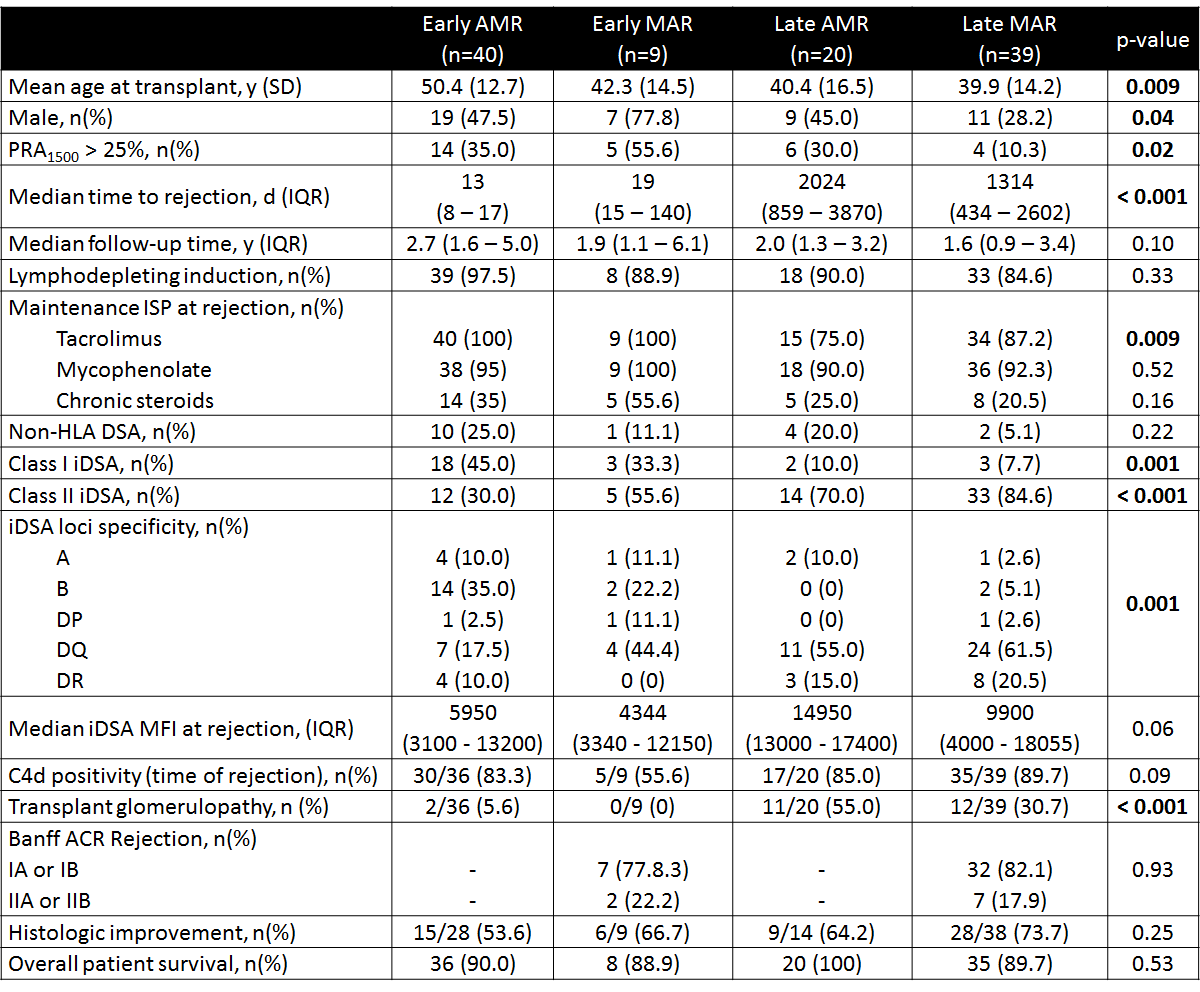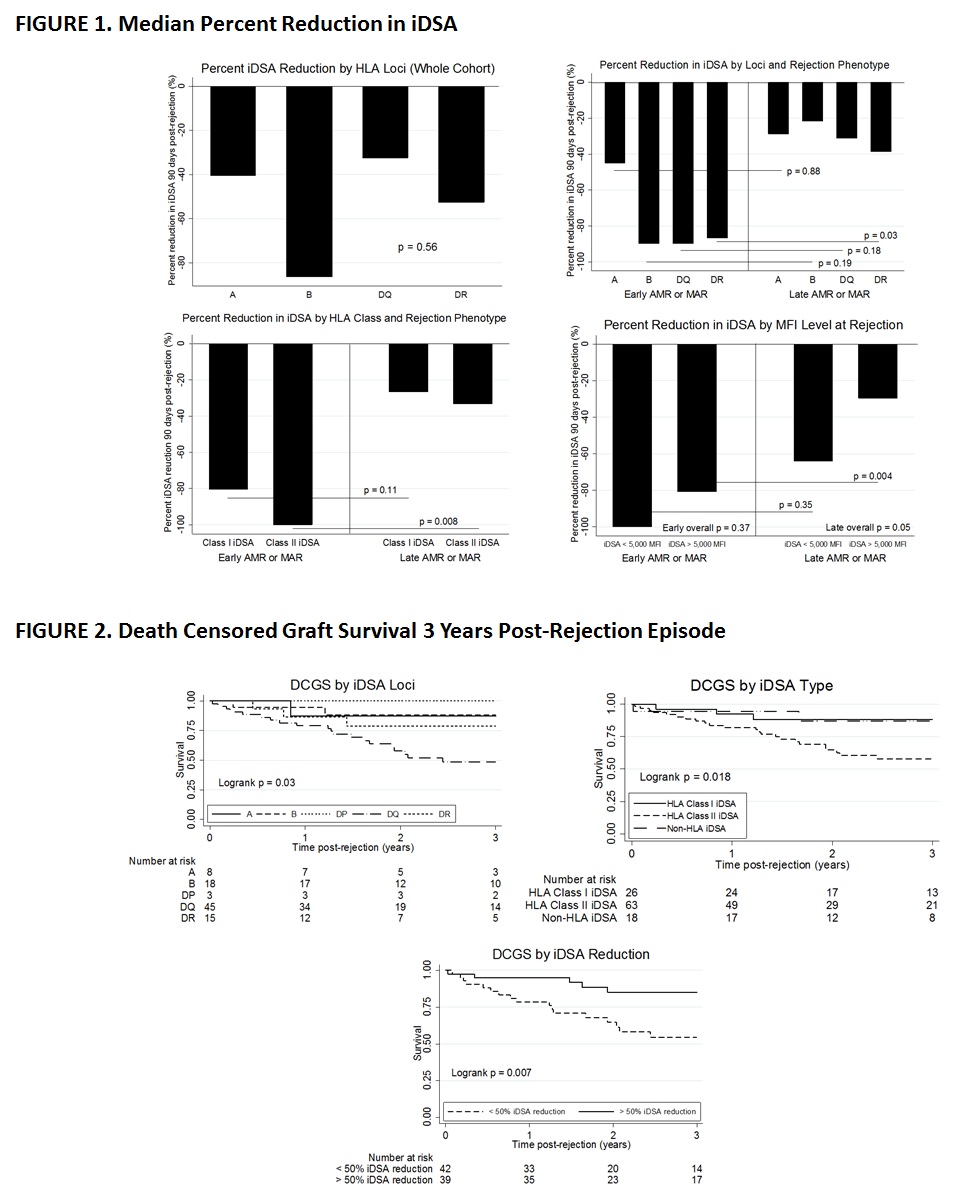Immunodominant Donor Specific Antibody Reduction with Proteasome Inhibitor Based Treatment: Clinical Variability and Implications for Long Term Graft Survival.
1University of Cincinnati, Cincinnati
2The Christ Hospital, Cincinnati
Meeting: 2017 American Transplant Congress
Abstract number: 302
Keywords: Antibodies, Rejection
Session Information
Session Name: Concurrent Session: Antibody Mediated Rejection in Kidney Transplant Recipients: Pathophsiology and Epidimiology
Session Type: Concurrent Session
Date: Monday, May 1, 2017
Session Time: 4:30pm-6:00pm
 Presentation Time: 5:42pm-5:54pm
Presentation Time: 5:42pm-5:54pm
Location: E354a
Proteasome inhibitor (PI) based regimens treat antibody mediated rejection (AMR) at least in part by eliminating donor specific antibody (DSA). iDSA response to PI-based therapy was assessed in a large cohort of patients with AMR and mixed acute rejection (MAR).
Methods:
Renal transplant recipients experiencing AMR or MAR from 1/2005 – 08/2015 treated with a single PI-based regimen (single dose of rituximab (375 mg/m2) + plasmapheresis x 4 sessions + bortezomib 1.3 mg/m2 x 4 doses) were assessed. The Banff Criteria was utilized to diagnose AMR and acute cellular rejection (ACR). MAR was defined as having both ACR and AMR. Early rejection occurred < 6 months post-RTx. Baseline demographics were statistically compared. iDSA pre- vs. post-treatment were compared with the Wilcoxson signed rank test. Kaplan Meier curves with logrank comparisons assessed death-censored graft survival (DCGS).
Results:
109 patients were included(early AMR [EAMR] = 40, early MAR [EMAR] = 9, late AMR [LAMR] = 20, late MAR [LMAR] = 39): female (58%) and Caucasian (68.8%) with a mean age of 44.1 years (+14.8 years). Percent iDSA reduction was different (EAMR -89.9% vs. EMAR -51.9% vs. LAMR -36.3% vs. LMAR -30.9%, p < 0.001). Results presented in Table 1, Figure 1, Figure 2.
Conclusions:
1) Late AMR/MAR had less reduction in both Class I and Class II iDSA compared to early rejection
2) HLA Class II iDSA, particularly DQ, had worse DCGS compared to other iDSA specificities
3) Patients with iDSA reduction > 50% with PI-based treatment experienced greater DCGS compared to patients with < 50% reduction

CITATION INFORMATION: Lichvar A, Leino A, Tremblay S, Shields A, Abu Jawdeh B, Hardy B, Anand M, Cuffy M, Cardi M, Alloway R, Woodle E. Immunodominant Donor Specific Antibody Reduction with Proteasome Inhibitor Based Treatment: Clinical Variability and Implications for Long Term Graft Survival. Am J Transplant. 2017;17 (suppl 3).
To cite this abstract in AMA style:
Lichvar A, Leino A, Tremblay S, Shields A, Jawdeh BAbu, Hardy B, Anand M, Cuffy M, Cardi M, Alloway R, Woodle E. Immunodominant Donor Specific Antibody Reduction with Proteasome Inhibitor Based Treatment: Clinical Variability and Implications for Long Term Graft Survival. [abstract]. Am J Transplant. 2017; 17 (suppl 3). https://atcmeetingabstracts.com/abstract/immunodominant-donor-specific-antibody-reduction-with-proteasome-inhibitor-based-treatment-clinical-variability-and-implications-for-long-term-graft-survival/. Accessed December 14, 2025.« Back to 2017 American Transplant Congress
